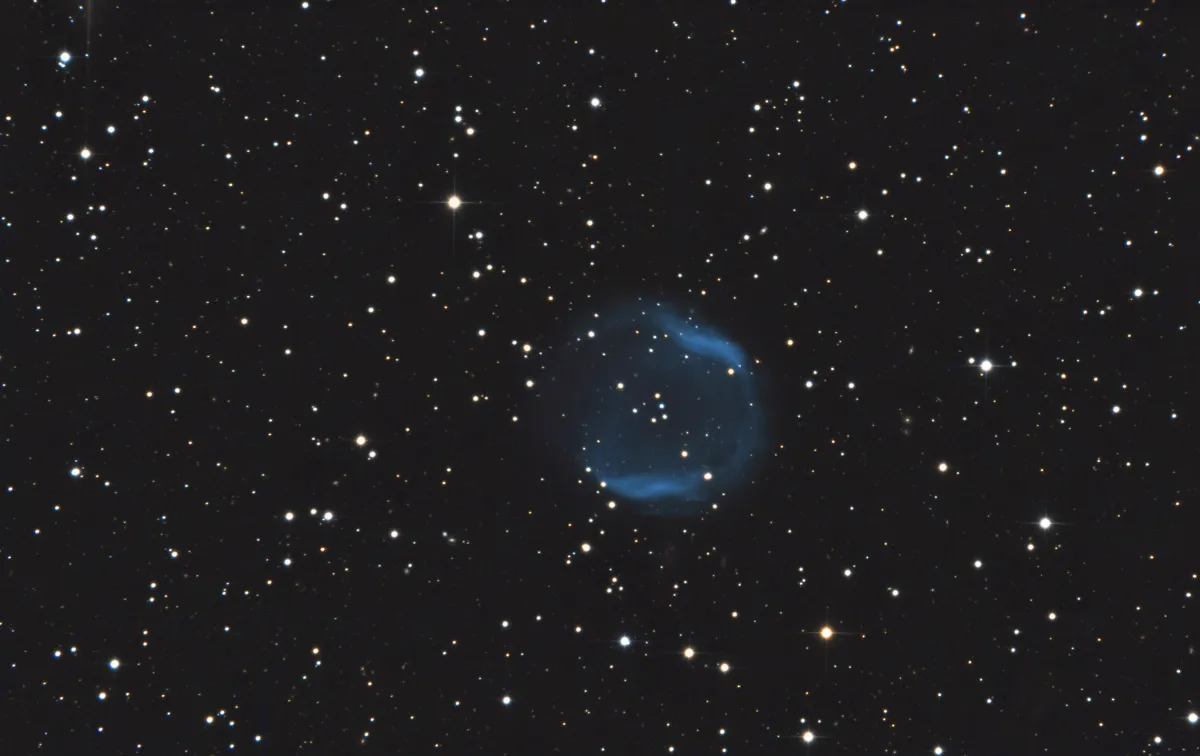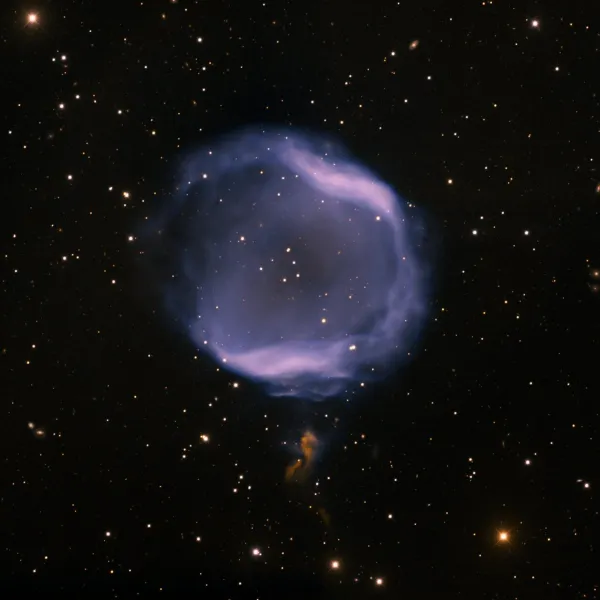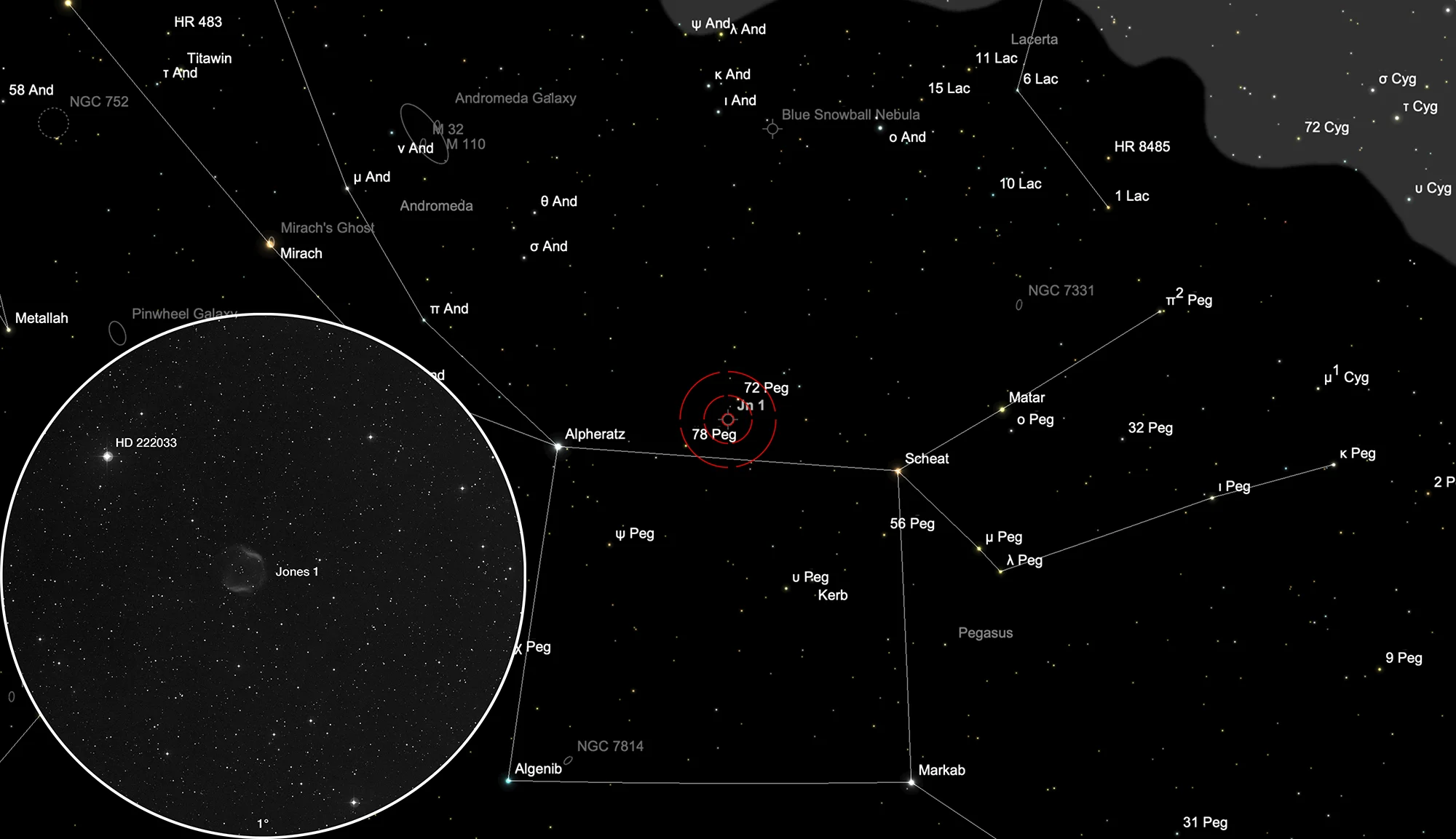Planetary Nebula Jones 1 (PK 104-29.1)

History
The planetary nebula Jones 1 (Jn 1, PK 104-29.1, VV' 578) was discovered in 1941 by the American astronomer Rebecca Jones on photo plates of the Harvard Observatory. Two years earlier, together with Richard M. Emberson, she discovered another planetary nebula: Jones-Emberson 1 (PK 164+31.1) in the constellation Lynx. [325]
The designation PK 104-29.1 comes from the two Czechoslovak astronomers Luboš Perek and Luboš Kohoutek, who in 1967 compiled a catalog of all the planetary nebulae of the Milky Way known at the time. The designation VV '578 goes back to the Russian astronomer Boris Vorontsov-Velyaminov, who studied and classified planetary nebulae in addition to cataloging galaxies. [145]
Physical Properties

Jones 1 is a large planetary nebula with an angular diameter of 320 arcseconds, but a faint with only 15 magnitudes. The central star is 16.8 magnitudes bright and the nebula itself 15.6 magnitudes. Distance measurements range from 716 pc to 826 pc (around 2300 to 2700 light years). [145]
| Designations | PN G104.2-29.6: Jn 1, PK 104-29.1, ARO 195, VV' 578 |
| Right Ascension (J2000.0) | 23h 35m 54s |
| Declination (J2000.0) | +30° 28' 02" |
| Dimensions | 320." (optical) |
| Radial Velocity | -67.0 km/s |
| Expansion Velocity | 15. (O-III) km/s |
| C-Star Designations | AG82 454 |
| C-Star Magnitude | U: 14.47, B: 15.72, V: 16.13 |
| C-Star Spectral Type | Of/WR(C)? |
| Discoverer | JONES 1941 |
Finder Chart
The planetary nebula Jones 1 is located in the constellation Pegasus, about 1° southeast of the 4.9 mag bright star 72 Pegasi. It is circumpolar in Central Europe, but the best time to observe it is May to February, when the constellation is highest at night.
Visual Observation
300 mm Aperture: In the 21 mm Ethos eyepiece, the PN is invisible without an O-III filter. However, its position can be clearly determined from the stars. With the O-III filter, the PN appears very faint, round and somewhat darker in the centre. The split structure can be guessed at. — 300 mm f/4 Popp Newton, Titlis 3020 m. a.s.l., SQM 21.25, 29 October 2022, 22:45, Bernd Nies
320 mm Aperture: Starting from the 300 mm Newtonian of the star friend and his eyepiece and OIII filter, the PN Jones 1 also revealed itself in the Ninja. The PN shows a ring structure, which is not completely circumferential. Only in the 457 mm Newtonian of another astro colleague two clearly defined ring segments could be seen. — 12.5" f/4.5 Ninja Dobsonian, Titlis 3020 m. a.s.l., SQM 21.25 m/s2, 29. 10. 2022, Eduard von Bergen
400 mm Aperture: The nebula is very faint in the O-III filter, but directly visible. With averted vision, a bright, subdivided edge and darker interior can be seen. In the H-β filter, as well as without filter, the nebula remains invisible. At slightly higher magnification (16 mm Nagler, 112x) the shape is more clearly defined, but remains very faint. — 400 mm f/4.5 Taurus Dobsonian, Ibergeregg, SQM 21.1, 26. 11. 2022, 21:30, Bernd Nies
